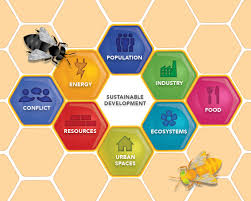The Power of Thought: Shaping Our Reality
Thought is a fundamental aspect of human existence, often underestimated in its profound impact on our lives. It is through thought that we navigate the complexities of our world, interpret our experiences, and shape our perceptions. From the simplest everyday decisions to the grandest visions of the future, thought is the silent force that guides us.
At its core, thought is a process of mental activity that involves reasoning, contemplation, and imagination. It is through thought that we analyze information, make connections, and form conclusions. Our thoughts are not just fleeting moments of consciousness; they have the power to influence our emotions, behaviors, and ultimately, our reality.
Consider the impact of positive thinking on one’s well-being. Studies have shown that individuals who maintain a positive outlook tend to experience lower levels of stress, better physical health, and greater resilience in facing challenges. This illustrates how our thoughts can shape not only our mental state but also our physical health.
Furthermore, thought plays a crucial role in creativity and innovation. It is through imaginative thinking that new ideas are born, solutions are found, and progress is made. The greatest inventions and works of art often stem from a single spark of thought that ignites a chain reaction of exploration and discovery.
However, it is important to recognize that not all thoughts serve us well. Negative thought patterns can lead to self-doubt, anxiety, and limitation. By becoming aware of our thoughts and actively choosing to cultivate positive ones, we can transform our mindset and open ourselves up to new possibilities.
In essence, thought is more than just a cognitive process; it is a creative force that shapes the world around us. By harnessing the power of thought through mindfulness, intentionality, and positivity, we have the ability to transform not only our own lives but also the collective reality we share.
Exploring the Nature of Thought: Answers to 7 Common Questions
- What is thought?
- How does thought influence behavior?
- Can thoughts affect our emotions?
- What is the connection between thought and perception?
- How can negative thoughts impact mental health?
- Is there a link between creativity and thought processes?
- Can mindfulness practices help improve our thought patterns?
What is thought?
Thought is the intricate process of mental activity that encompasses reasoning, contemplation, and imagination. It is the mechanism through which we analyze information, make sense of our experiences, and form perceptions about the world around us. Thought goes beyond mere consciousness; it influences our emotions, behaviors, and ultimately shapes our reality. From everyday decision-making to profound philosophical ponderings, thought is the invisible force that guides human cognition and creativity.
How does thought influence behavior?
Thought is a powerful driver of behavior, shaping the way we perceive and interact with the world around us. Our thoughts serve as the blueprint for our actions, influencing our decision-making process, emotions, and responses to external stimuli. Positive thoughts often lead to constructive behaviors, fostering optimism, motivation, and resilience. Conversely, negative or limiting thoughts can manifest in self-doubt, fear, and avoidance behaviors. By understanding the intricate relationship between thought and behavior, we gain insight into how our mental processes can ultimately dictate the outcomes of our actions and interactions.
Can thoughts affect our emotions?
Thoughts have a profound impact on our emotions, as they are intricately connected in shaping our mental and psychological well-being. The relationship between thoughts and emotions is dynamic and reciprocal; our thoughts can trigger various emotional responses, influencing how we feel and behave in different situations. Negative thoughts, such as self-criticism or rumination on past events, can lead to feelings of sadness, anxiety, or stress. Conversely, positive thoughts and affirmations can uplift our mood, boost confidence, and promote a sense of well-being. By being mindful of our thought patterns and actively cultivating positive thinking, we can effectively manage our emotions and foster a healthier mindset.
What is the connection between thought and perception?
The connection between thought and perception is intricate and symbiotic. Perception serves as the gateway through which external stimuli are received and interpreted by our senses, providing raw data to the mind. Thought then processes this information, giving it meaning, context, and significance. Our perceptions shape the thoughts we generate, influencing our beliefs, attitudes, and understanding of the world. Conversely, our thoughts can also influence how we perceive reality, as our mental frameworks and biases filter and interpret incoming sensory information. This dynamic interplay between thought and perception highlights their interconnected nature in shaping our cognitive experiences and shaping our reality.
How can negative thoughts impact mental health?
Negative thoughts can have a significant impact on mental health by fueling feelings of anxiety, depression, and low self-esteem. When individuals consistently dwell on negative thoughts, it can lead to a cycle of pessimism and hopelessness that affects their overall well-being. These thoughts can distort perceptions of reality, magnifying problems and diminishing one’s ability to cope effectively. Over time, the accumulation of negative thoughts can contribute to chronic stress, emotional instability, and even exacerbate existing mental health conditions. It is crucial to address and challenge negative thought patterns through therapy, mindfulness practices, and positive reframing techniques to promote mental resilience and well-being.
Is there a link between creativity and thought processes?
The link between creativity and thought processes is undeniable, as creativity often emerges from the intricate workings of our thoughts. Thought processes play a pivotal role in fostering creativity by allowing us to explore new ideas, make unique connections, and envision innovative solutions. Creative individuals often engage in divergent thinking, where they generate multiple possibilities and perspectives through their thought processes. By embracing unconventional thoughts and breaking away from conventional patterns, creativity flourishes, leading to the birth of original concepts and artistic expressions. In essence, the dynamic interplay between thought processes and creativity highlights the profound influence that our minds have on shaping imaginative endeavors and pushing the boundaries of innovation.
Can mindfulness practices help improve our thought patterns?
Mindfulness practices have been shown to have a profound impact on improving our thought patterns. By cultivating awareness of our thoughts in the present moment without judgment, mindfulness enables us to observe and understand the nature of our thought processes. Through regular practice, individuals can develop the ability to recognize negative thought patterns, redirect their focus, and cultivate more positive and constructive ways of thinking. This heightened awareness allows for greater control over one’s thoughts, leading to improved mental clarity, emotional well-being, and overall cognitive functioning.





